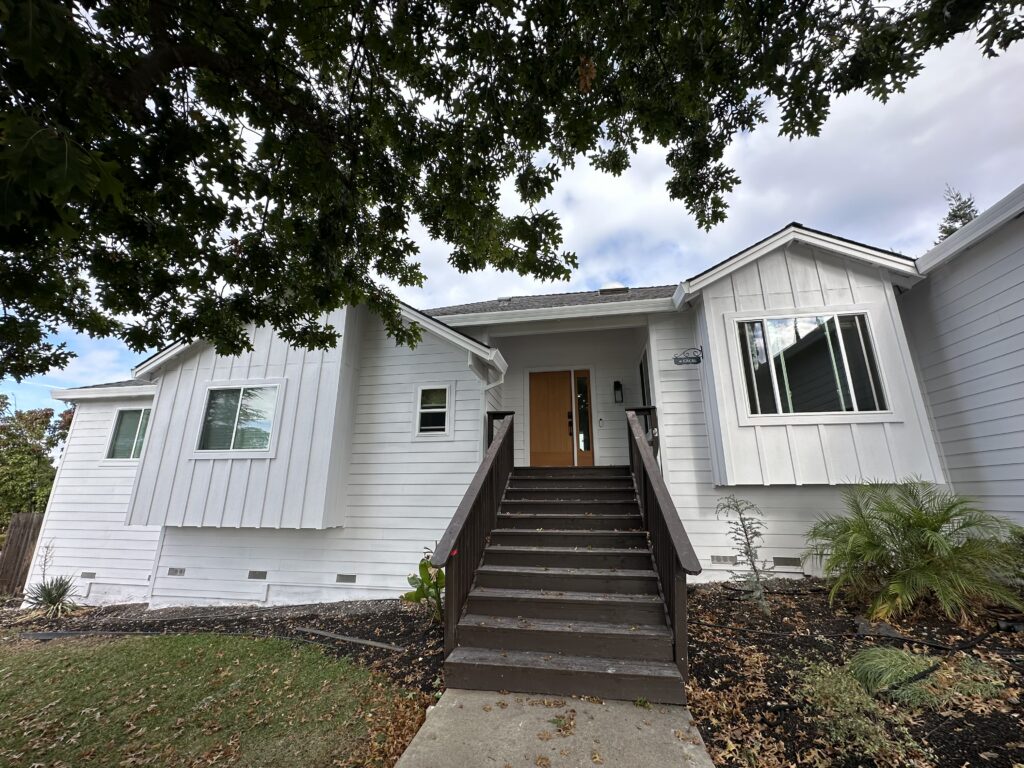James Hardie siding is celebrated for its durability, aesthetic appeal, and ability to withstand a range of weather conditions. But, like any home improvement material, it’s not completely immune to wear and tear over time. While these issues are relatively rare, understanding potential problems—and how to resolve them—can save you stress and maintain your siding’s performance for years to come.
Here’s a rundown of common problems homeowners might encounter with James Hardie siding and practical advice to fix them.
Improper Installation
Why It Happens
Proper installation is vital for James Hardie siding to perform as designed. Errors like uneven placement, incorrect fasteners, or insufficient gaps between boards for expansion can lead to issues such as warping, gaps, or compromised durability.
How to Spot It
- The siding appears wavy or uneven.
- Noticeable gaps between panels.
- Siding pulling away from the home’s surface.
How to Fix It
- Hire Certified Professionals:
Work exclusively with James Hardie Preferred Contractors, who are trained to meet the manufacturer’s strict installation standards.
- Inspect and Reinstall:
If you suspect improper installation, consult a professional to evaluate the issue. They may need to adjust fasteners, close gaps, or replace incorrectly installed panels.
- Ask for Install Records:
If your home came with James Hardie siding pre-installed, request records from the previous owner or builder to verify if certified contractors handled the original installation.
Moisture Intrusion
Why It Happens
James Hardie siding is designed to resist moisture when correctly installed. However, improper sealing, poor flashing, or missing weather barriers can allow water to infiltrate, leading to rotting sheathing or mold growth.
How to Spot It
- Stains or discoloration around seams or edges.
- Warping or bulging panels.
- Softened or rotted wood beneath the siding.
How to Fix It
- Inspect Flashing and Seals:
Check that all joints, windows, and trim are properly sealed with caulk and flashing. Reapply sealant or replace flashing as needed.
- Repair or Replace Affected Panels:
Damp or warped boards should be replaced promptly to prevent moisture from spreading deeper into your home’s structure.
- Apply a Moisture Barrier:
Professionals may add or repair a house wrap to enhance water resistance.
Tip: Schedule annual inspections to catch signs of moisture issues early.
Cracking or Chipping
Why It Happens
Although fiber cement siding is incredibly tough, impacts from heavy objects or extreme weather conditions, like hail, can cause small cracks or chips.
How to Spot It
- Visible cracks or chipped pieces along panels.
- Gaps in continuity where debris or moisture can collect.
How to Fix It
- Patch Cracks Early:
Use paintable exterior-grade caulk to fill cracked sections. Smooth the surface and match the existing color with touch-up paint.
- Replace Seriously Damaged Boards:
If the damage is extensive, work with a contractor to replace affected sections.
- Prevent Future Damage:
Trim back nearby tree branches and be cautious during yard work to minimize the risk of falling debris or physical impacts.
Fading or Discoloration
Why It Happens
James Hardie siding with ColorPlus® Technology offers superior color retention. However, siding that has standard exterior paint finishes may fade over time due to UV exposure or harsh weather.
How to Spot It
- Uneven color fading on sun-exposed sides of the home.
- Areas that appear dull or discolored compared to the rest of the siding.
How to Fix It
- Repaint Non-ColorPlus® Siding:
Use high-quality, exterior-grade paint. Be sure to clean and prep the siding according to James Hardie’s guidelines before repainting.
- Touch Up Areas:
For minor discoloration, use matching paint to restore uniformity.
- Switch to ColorPlus® Technology:
Consider upgrading to pre-painted ColorPlus® siding during future replacements to avoid the hassle of frequent repainting.
Tip: Avoid power washing your siding at high pressure to prevent stripping paint, and use non-abrasive cleaning methods instead.
Maintenance Neglect
Why It Happens
James Hardie siding is low-maintenance, but neglecting basic upkeep like cleaning, inspections, or caulking can lead to unnecessary wear over time.
How to Spot It
- Dirt buildup, especially on lower panels.
- Unsealed gaps appearing along seams or edges.
- Slow-growing issues like mold or mildew.
How to Fix It
- Routine Cleaning:
- Use a garden hose and soft-bristle brush to wash away dirt and grime. Avoid high-pressure washers, which can damage the finish.
- Regular Inspections:
- Check for gaps, caulk deterioration, or minor damage every six months. Promptly address any issues found.
- Seal and Paint Touch-Ups:
- Reseal caulking when it begins to wear and touch up faded or chipped paint periodically.
Tip: Establish an annual maintenance schedule to protect your investment and extend the siding’s lifespan.
Take Action Today to Protect Your Siding
While James Hardie siding is built to deliver exceptional performance, addressing minor issues promptly keeps it looking and functioning like new for decades. From ensuring proper installation to committing to regular maintenance, taking a proactive approach protects your home from costly repairs and enhances its appeal.




